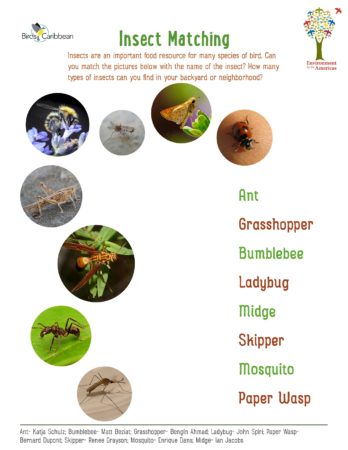Celebrate World Migratory Bird Day (WMBD) with us in our virtual “Birds Connect Our World” edition! Have fun learning about a new migratory bird every day. We have colouring pages, puzzles, activities, and more. Download for free and enjoy nature with your family at home.
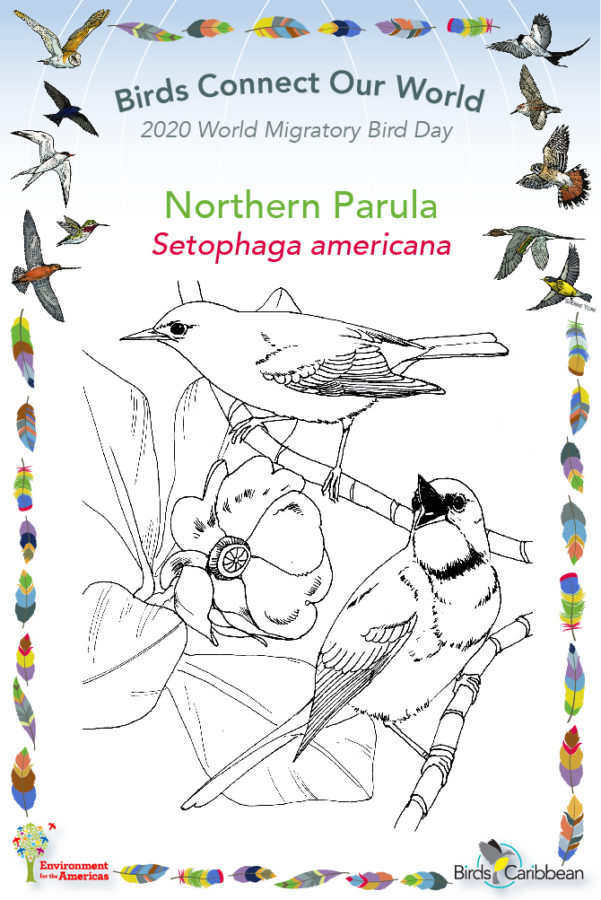
Migratory Bird of the Day: Northern Parula
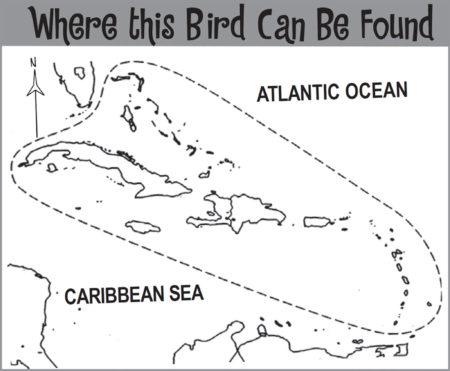
This tiny colourful bird is one of the smallest warblers, and weighs only ~8.6g! Northern Parulas are a smart shade of blue-gray above, with a greenish-yellow patch on the back. They have a yellow throat and breast and a white belly. Also look out for two white wing-bars and their distinctive white eye crescents. Breeding males have a black and chestnut coloured breast band. There might be some faint remains of this still visible during fall migration. Females are similar to males but duller and usually lack the breast bands.
Northern Parulas breed in the eastern North America, from Florida up to the boreal forests of Canada. Interestingly they have a strange gap in their breeding range, missing from large parts of Iowa, Wisconsin, Michigan, and some states in the Northeast. Northern Parulas rely on Spanish moss to nest. This ‘gap’ could be linked to a lack of this vital resource due to habitat loss and increasing air pollution. Northern Parulas migrate south in the fall and arrive to spend the winter in the Caribbean from August onwards. It is one of the most common migrant warblers in the region. When they get ready to head north again from March you might even hear their ascending buzzy song!
This dainty and active warbler feeds on insects, and can be found during the winter in dry forest and scrub. They will pick insects from the undersides of leaves, as well as catch them in the air. They can also be found in many human-modified landscapes including, pastures, coffee, cacao, and citrus plantations. Northern Parulas mainly migrate at night and may join mixed-species flocks with other types of wood warblers. Night migrations leave wood warblers, like the Northern Parula, vulnerable to collisions with made-made structures such as tall buildings or communication towers. Hundreds to thousands are killed annually from collisions during migration throughout their range. Learn more about this species, including its range, photos, and calls here.
Colour in the Northern Parula!
Download the page from Migratory Birds of the West Indies Colouring Book. Use the photos below as your guide, or you can look up pictures of the bird online or in a bird field guide if you have one. Share your coloured-in page with us by posting it online and tagging us @BirdsCaribbean #WMBD2020Carib
Listen to the call and song of the Northern Parula
The call of the Northern Parula is a sharp “chip” sound.
In Spring you might also hear the song of the Northern Parula, an ascending buzzy trill.
Puzzle of the Day
Click on the images below to do the puzzles. You can make the puzzle as easy or as hard as you like – for example, 6, 8, or 12 pieces for young children, all the way up to 1,024 pieces for those that are up for a challenge!
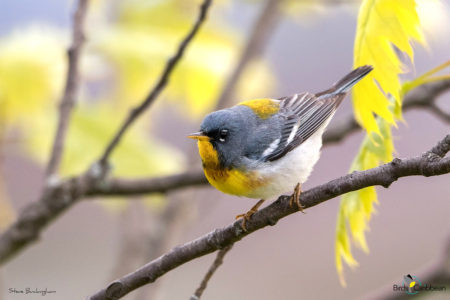
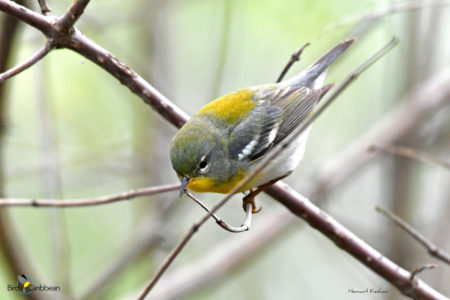
Activity of the Day
FOR KIDS: Can you match the insect names to the photos? Insects are a very important food source for migratory birds, many head south on migration in search of insects to help them survive the winter. Warblers in particular often specialise in eating mainly insects. Find the answers here.
FOR KIDS AND ADULTS:
- Take a walk and see if you can spot a migratory warbler or any of our other migratory birds. Use a bird field guide or the FREE Merlin bird ID app to help you identify the birds you are seeing.
- Enjoy the videos below of the Northern Parulas, where you can see the differences between the males and females. The first video shows a male bird, wintering in Cuba, foraging for insects on leaves. The second shows a female Northern Parula sunning herself.
- Visit MigratoryBirdDay.org for many more free activities and resources to learn about migratory birds, their threats and conservation actions you can take.

